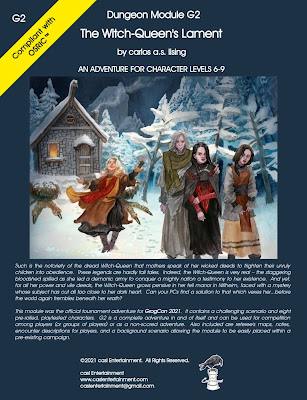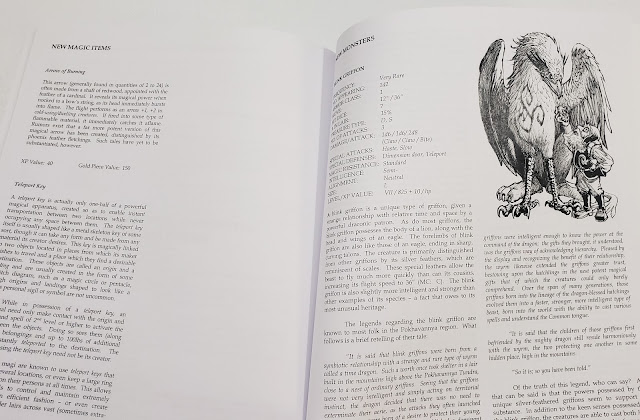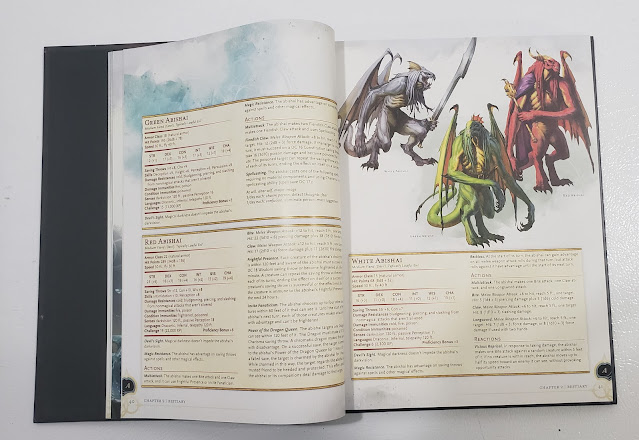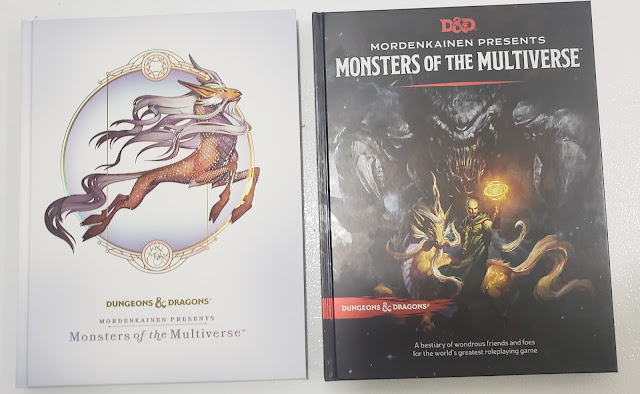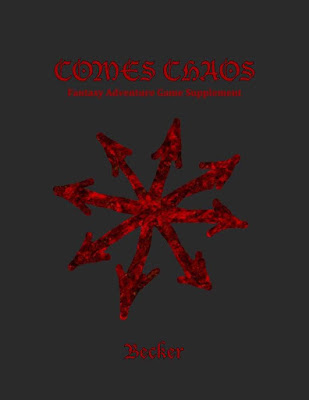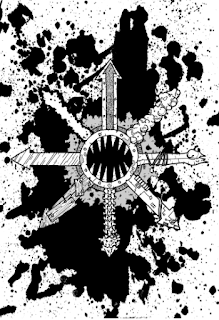My copy does not have a cover, but thankfully I still have my trusty Dragon CD-ROMs. And this is one of my favorites. I had just rolled up a cavalier from the Unearthed Arcana and I figured this was a good representation of him. This particular cover was painted by Robin Wood.
Given the mustiness of my copy I might be sticking with the CD.
Kim Mohan talks about how he spent his summer, working on the new Wilderness Survival Guide, a follow-up to the Dungeoneer's Survival Guide. We ate those books up in our group. I remember going back and trying to retcon proficiencies for all my AD&D characters in play, some had gotten to fairly high levels. These days prefer a much simpler skill system. D&D 5 is a good example. And many "cinematic" point-buy systems. In my OSR games, I more or less let my players tell what they are good at and leave it at that. For example, I'll mention Erky Timbers below. He is a gnome who is an expert on cheese. He gets a +2 on any rolls involving cheese. It comes up more often than I expected.
Letters cover something timely for me, responses to the Hooves and Green Hair article from Dragon #109.
The Forum covers questions about HD and quibbles about the Unearthed Arcana.
A nice big colorful ad for the Dragonfire II Dungeon Master's Assistant software. There is a review in Dragon #116, so I think I'll get into the details of it then and there.
Out big section for this issue is all about Hades, the Land of the Dead. It looks to square the mythological Hades, a place of gloom but not really evil with the D&D Hades, a land of Neutral Evil. Bruce Bauer gives us the treatise and his bibliography is top-notch for the time. Like the nature of the planes in AD&D 1st ed, the article spends a lot of ink on how spells work or don't work, in this land. There is a bit on the land itself and the various rulers. This is sort of the problem I ran into in One Man's God, there is mythology here based on real-world myths mixed all together that don't always work out. Still, though it is a fascinating read and a topic that often gets lost when dealing with the Lower Planes. The material is still good today and not entirely incompatible with newer games.
An old friend of the Other Side Vince Garcia is back with A Capital Idea. Vince covers how the PCs can make money becoming business people. I go back to this article every so often because every so often I get a player that wants to go into business. Currently, my youngest's character, Erky Timbers, wants to hire a legion of gnome artificers to build magic items. Erky is taking all his treasure and putting it to this goal. Gods help me if he figures it all out.
Nice ad for the Dragonbone dice roller and the Dragonskin book covers. They looked cool, too bad they tended to melt onto the covers of books and ruin them.
John C. Brunnell is up with The Role of Books. Covered are Janet and Isaac Asimov's The Norby Chronicles. Janet Morris takes a break from Thieve's World to go to Hell in Heroes in Hell. The one I read back then was Diane Carey's Dreadnought! about the Dreadnought class starship in Star Trek.
Folklore is the topic in Thomas M. Kane's The Tales People Tell. This is the backstory part of world-building that so many of today's gamers love. It gives examples of tales from our world and how they are used and then provides some examples. Though to really use this article well you should read Kane's examples, but make up your own.
Computers are all the rage in the 80s and Mike Gray reviews Ultima IV in Magic and Morality. Gray mentions he hates giving rave reviews since they are rarely accurate, but he raves about Ultima IV: Quest of the Avatar. He talks a lot about the morality of the game and even mentions that *shock* you can get through it without a lot of combat! He makes the claim that this is the closest that anyone has gotten (so far) to a full-fledged RPG experience on a computer.
Clout for Clerics is a good article to expand the role of the Cleric and give them some followers. James Yates gives us lesser clerics and man-at-arms followers for clerics and explains why, out of all the classes, they should have them.
A Saddle's Not Enough by Mike Albers covers the historical importance of the stirrups. This actually helped me on a history exam later in life.
William Carlson covers combat in the Conan RPG from TSR in Combat Complexity.
Our centerpiece is a cut-out cardboard dragon that my issue does not have. The CD-ROM has it, but no idea if it is complete or not.
Ah, now time for a bit of a look into the Way Back Machine. First is TSR Previews with what are going to be the hot new titles from TSR in November 1986. The Wilderness Survival Guide is coming out for AD&D. The Creature Catalog for Basic D&D is on the way and wait, what's this a SEQUEL to Ravenloft? Ravenloft II: The House on Gryphon Hill? Sign me up! We also get the Convention Calendar for September/October 1986.
TSR Creator Profiles feature the late great Keith Parkinson and the still great Bruce Heard.
A Difficult Undertaking is our fiction bit from none other than Harry Turtledove.
Easy as 1, 2, 3 from Rick Swan talks about how to make NPCs more interesting. This article largely focuses on how to make the best use of tables on pages 100-102 of the Dungeon Master's Guide.
Larry Church tries to tempt me with better math in One Roll, To Go. Using his binomial tables he has you reduce the numbers of rolls you need to make. Nice idea, bad concept though. Why? People love dice and love to roll them. While rolling less might mean a faster game it doesn't mean a more fun game.
Top Secret gets in on the Top Gun craze with military aircraft in Top (Secret) Guns. My first college roommate was Air Force ROTC. Nice enough guy, but fuck I never want to see Top Gun again. Though that soundtrack by Berlin was quite good.
Mike Sitkiewicz is a triple threat with his Minimagic article where he painted the minis, built the dioramas, and took the pictures. See for yourself.
Like many of us, Scott A. Hutcheon loved the Terminator movie (there was only one still) so he gives us Cold Steel, various hunter and killer robots for Gamma World 2nd Edition, with 3rd Edition notes promised. I can't throw stones really. I even wanted to try out a "Terminator" like future in Gamma World of the last of the pure strain humans vs killer robots I called Machine World, gleefully stolen from the Queen song of the same name.
Ah some Traveller goodness. Here we get Star Cops! from Terrence R. McInnes. It is still three years before COPS hits the Fox Network, but if you start humming Bad Boys no one is going to stop you. This article is also one of the reasons why I don't have a Dragon CD-ROM for issues past 250. This article is copyrighted by McInnes, so likely there were never any second-run or reprintings allowed. Anyway, this article deals with character creation for police forces. It actually looks rather fun.
We get to the small ads. You can cast your own metal minis for just pennies! Get your own custom full-figure character from Avil Enterprises (always wanted one) and ads for various game stores including the legendary Wargames West.
Tramp was making some news again on social media so it is a bit bittersweet to see Wormy here. Dragonsmirth has the normal silliness, but this issue has extra black mold. Not happy. And three pages of Snarf Quest.
All in all not a bad issue. Not a completely memorable one. But not bad. Though I am going to need to double up on the Benadryl after this one.




